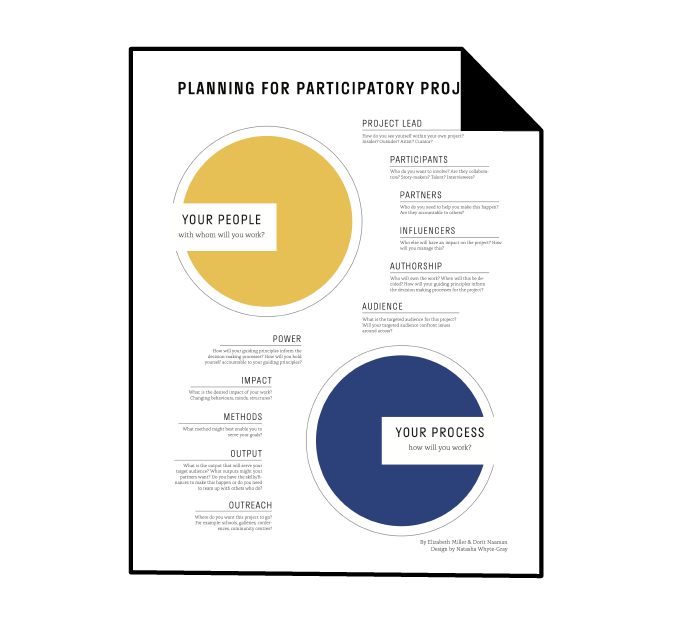Partners: Your People
Who do you need to help you bring your project to fruition: peers, volunteers, technical support, outreach partners, advisory board? Are they accountable to other organizations or institutions? How will you ensure there is sufficient time to build and sustain meaningful partnerships with your partners? What will the extent of their participation or involvement be? How might the make-up of your team reflect your guiding principles and influence your final objectives and outcomes? For example, are you offering novices an opportunity to learn how to produce a film, or are you working with an experienced crew? Are you working exclusively with a specific group, e.g. women or young people to enhance training or network opportunities? Are you clear about your crew’s expectations? Who do you have in mind to vet the project at different stages of production? What happens if there is a change in the project design or outcome? Who needs to know?
Additional questions and prompts
Make a list of all the possible individuals or groups you have involved or plan to involve in your project. How might they benefit from being involved? Does the story that emerges foreground one perspective or many? Do the participants have a strong rapport with each other? What technical support will you require? Will there be compensation or other benefits for participating?
Reading
Miller, Elizabeth, Edward Little, and Steven High. Going Public: The Art of Participatory Practice, Vancouver: University of British Columbia Press, 2017. Going Public Companion Website includes films and interviews with over 25 practitioners about collaborative partnerships.
Naaman, Dorit. “On the “We” in Jerusalem, We Are Here.” Graylit, August 3, 2020. https://graylit.org/blog/jerusalem-we-are-here
Sinclair, Kamal and Jessica Clark. Making a New Reality: A Toolkit for Inclusive Futures. August 2020.


